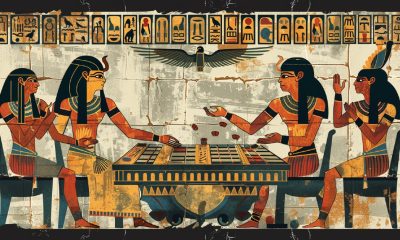Artificial Intelligence
Researchers Create AI Tool That Can Make New Video Game Levels

As machine learning and artificial intelligence became more sophisticated, video games proved to be a natural and useful proving ground for AI algorithms and models. Because video games have observable and quantifiable mechanics, objects, and metrics, they make convenient ways for AI developers to test the versatility and reliability of their models. While video games have helped AI engineers develop their models, AI can potentially help video game designers create their own games. Recently, a group of researchers at the University of Alberta designed a set of algorithms that could automate the creation of simple platforming video games.
Matthew Guzdial is an assistant professor and AI researcher at the University of Alberta, and according to Time magazine, Guzdial and his team have been working on an AI algorithm that can automatically create levels in side-scrolling platforming video games. This automated level design could save game designers time and energy, allowing them to focus on more demanding tasks.
Guzdial and his team trained an AI to generate platforming game levels by having the AI train on many hours of platforming game gameplay. Guzdial, including games like the original Super Mario Bros., Kirby’s Adventure, and Mega Man. After the initial training, the AI is tasked with rendering predictions about the rules/mechanics of the game, comparing its assumptions with test footage of the game. After the AI has managed to interpret the rules that a game operates on, the researchers then used a similar training method to construct entirely new levels that the model’s rules are tested in.
Guzdial and his team created a “game graph”, which is a merger of both the model’s beliefs regarding rules and its assumptions about how the levels that use this rules are designed. The game graph combined all the crucial features regarding a game into one representation, and this representation, therefore, it contained all the necessary information for the game to be reproduced from scratch. All of the information contained in the game graph was then used to engineer new levels and games. The contents of the model’s observations are combined in new, unique ways. For example, the AI combined aspects of both Super Mario Bros. and Mega Man to create a new level that drew on the platforming mechanics of both games. When this process is repeated over and over, the end result could be an entirely new game that feels very similar to classic platformers but is nonetheless unique.
According to Guzdial, as quoted by Time, the idea behind the project is to create a tool that game developers can use to start designing their own levels and games without needing to learn how to code. Guzdial pointed to the fact that Super Mario Maker is already taking this concept and running with it.
Guzdial and the other members of the research team are hoping to take the concept even further, potentially creating a tool that could like people to create new levels or games just by specifying a certain “feel” or “look” that they. Once the model receives these specifications it can then go about creating a new game with unique levels and rules. The model would apparently only need two frames of a game in order to do this, as it would extrapolate from the differences between the two frames. The user would be able to give the model feedback as it generated levels, and the model would create new levels based on the provided feedback.
“We’re putting some finishing touches on the interface and then we’re going to run a human subject study to find out if we’re on the right track,” Guzdial said to Time.
Although any consumer-ready version of that application is still a way in the future, Guzdial expressed concerns that the games industry might be slow to adopt the technology due to concerns that it might reduce the need for human game designers. Despite this, Guzdial did think that if anyone was likely to use the tool, the first people to do so would likely be independent game developers, who might use it to create interesting, experimental games.
“I can totally imagine that what we get are some passionate indie [developers] messing around with these technologies and making weird, cool, interesting little experiences,” said Guzdial. “But I don’t think they’re going to impact triple-A game development anytime soon.”














